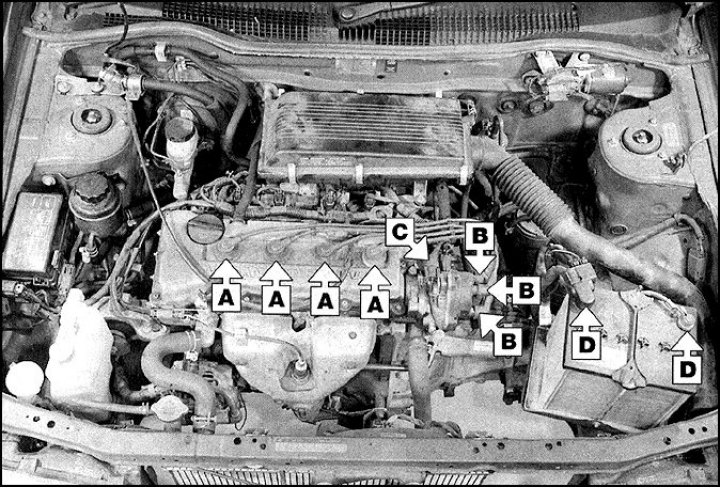If the engine does not start and the starter does not rotate
1. If the car is equipped with an automatic transmission, then make sure that the selector lever is in the position "P" or "N".
2. Make sure the battery poles are clean and the terminals are secure.
3. Turn on the headlights and try to start the engine. If the headlights are very dim when starting the engine, the most likely cause of the failure to start the engine is a dead battery. Start the engine from another vehicle's battery (see subsection 1.12.1).
If the engine does not start with the starter running normally
Fuel system and ignition system connector locations

1. Check if there is fuel in the tank.
2. Check for moisture on parts and electrical equipment of the engine.
3. Turn off the ignition and wipe the moisture accumulation areas with a dry cloth. Apply a water repellent spray (WD-40 or equivalent) to the connectors of the fuel system and the ignition system (A, B, C, D) (see fig. Fuel system and ignition system connector locations). Check the ignition coil low voltage connector and high voltage wires especially carefully.

4. Check the reliability of the connection of high-voltage wires on the spark plugs (A), by pressing on the tip of the wire.

5. Check the reliability of the connection of high-voltage wires on the cover of the ignition distributor (IN), the reliability of fastening the connector on the distributor.

6. Check the reliability of the connection of high-voltage wires on the ignition coil (WITH).

7. Check the connection of electrical connectors (D) (with the ignition off). If moisture ingress is suspected, spray with WD-40 water repellent spray.